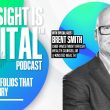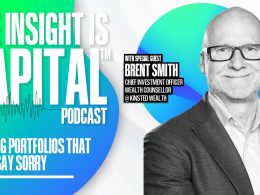by Liz Ann Sonders, Chief Investment Strategist, and Kevin Gordon, Charles Schwab & Company Ltd.
There was something for everyone—even those supportive of an economic soft landing—in December's jobs report, but recessionary signals have not subsided.
Put simply, there was something for everyone in this labor update. Those in the recession camp can point to a decline in hours worked, spike in multiple jobholders, and rolling over in weekly pay growth to bolster their case. Those on the non-recession, soft landing team can cheer for wage growth moving down while the unemployment rate dipped to near its lowest since the 1960s. This arm wrestle—which we'll detail through the collection of charts below—underscores that the labor market continues to send mixed signals.
Green light, red light
That jump was certainly a surprise to many observers, but it's worth noting that household employment data is historically more volatile than nonfarm payroll data. In addition, although the Establishment Survey shows that 2.9 million payrolls were added over the past nine months, the Household Survey has shown an increase of only 920k. As a reminder, the Household Survey tends to lead payrolls at turning points in the economic cycle; so, if December's gain ends up being an outlier, the slowdown signal from household employment will remain intact. Also, for what it's worth, there were no full-time jobs added in December.
Not in this household

Source: Charles Schwab, Bloomberg, Bureau of Labor Statistics, as of 12/31/2022.
At the industry level, breadth was strong for both the goods-producing and services-providing segments of the economy. As shown in the chart below, hiring was robust across industries, albeit with notable declines in information and professional & business services. It's also worth noting that temporary help services jobs—not broken out below, but a key leading indicator—fell for the fifth straight month.
Still hiring

Source: Charles Schwab, Bloomberg, Bureau of Labor Statistics, as of 12/31/2022.
Where art thou, Phillips curve?
As shown in the chart below, average hourly earnings (AHE), for production and nonsupervisory workers, grew by 5% year-over-year in December. While that is still fast relative to history, it's down from the recent peak of 6.7% in March 2022. Perhaps more impressively, that decline has occurred in the context of an unemployment rate that has barely budged. In fact, from March to December, it moved down from 3.6% to 3.5%.
Of note though, given that AHE is an average, not a median, it can get skewed by "mix shift." Notably, the 2020 spike in AHE to near-8% was largely driven by lower-wage workers losing their jobs in greater proportion during the pandemic lockdown phase—somewhat artificially boosting the average wage. As those workers rejoined payrolls into 2021, that biased the average wage significantly lower (to sub-2%). What may be happening now is that higher-wage workers are starting to lose jobs—especially within the tech sector—which could explain some of the rolling over in AHE.
Wages down, unemployment not up

Source: Charles Schwab, Bloomberg, Bureau of Labor Statistics, as of 12/31/2022.
*Average hourly earnings for production and nonsupervisory workers.
The dynamic of softening wage growth and a largely unchanged unemployment rate calls into question the viability of the Phillips Curve, which argues that lower unemployment is consistent with faster wage growth (and vice-versa). In fairness, it's likely too early for the Fed to declare victory with wages growing at 5%, but at the same time, the current downtrend in wage growth is historically consistent with a rising unemployment rate. The question moving forward is whether the Fed stays married to the disciplines of the Phillips Curve. If not, it might strengthen the case that wages can fall without a commensurate spike in unemployment.
Still easy to leave

Source: Charles Schwab, Bloomberg, Bureau of Labor Statistics, as of 12/31/2022.
Fed alert
Less open for business

Source: Charles Schwab, Bloomberg, Bureau of Labor Statistics, as of 11/30/2022.
Confirmation of slowing demand on the part of companies is also showing up in the high-frequency jobless claims data. As shown in the chart below, continuing jobless claims—which track how many individuals are receiving unemployment benefits—have risen by nearly 30% from their recent trough. That is well above the average increase from a pre-recession trough to the start of a recession, as shown in the table within the chart.
Continuing to worsen

Source: Charles Schwab, Bloomberg, as of 12/23/2022. Y-axis truncated for visual purposes.
Another worrisome signal has been the pickup in layoff announcements. Per Challenger, Gray, and Christmas, company layoff announcements surged by 129% year-over-year in December, a drop from the 417% jump in November—but still one of the largest increases since the pandemic started. The caveat here is that layoffs have mostly been confined to the beleaguered tech sector, so breadth is worth watching when it comes to this metric.
Deeper cuts

Source: Charles Schwab, Bloomberg, as of 12/31/2022.
Tying this back in with December's jobs report, it's worth looking—especially at this phase of the economic cycle—at the cracks that continue to widen underneath what is thought of as a strong labor foundation. One of the glaring blemishes we've been highlighting for a while is the significant cuts to hours worked.
Work less, make less

Source: Charles Schwab, Bloomberg, Bureau of Labor Statistics, as of 12/31/2022.
In sum
Copyright © Schwab.com














